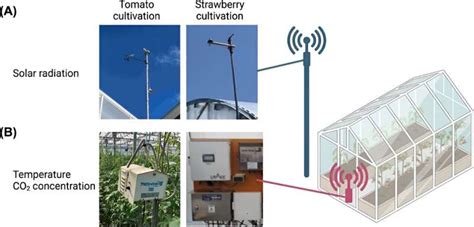Introduction

In the face of burgeoning global populations and a changing climate, sustainable agricultural practices are paramount to ensuring food security and environmental stewardship. Understanding the intricate interplay between environmental variables and crop genotype holds immense potential for optimizing agricultural productivity and resilience.
Environmental Variables: A Complex Matrix
Crop growth and development are profoundly influenced by a myriad of environmental factors, including:
- Temperature: Affects seed germination, seedling emergence, and plant maturity.
- Water: Crucial for photosynthesis, cell turgidity, and nutrient uptake.
- Light: Drives photosynthetic processes and canopy architecture.
- Soil fertility: Provides essential nutrients for plant growth and development.
- pH: Influences nutrient availability and microbial activity in soil.
- Wind: Can cause lodging, reducing yield potential and increasing susceptibility to pests.
Crop Genotype: The Genetic Blueprint
The genetic makeup of a crop determines its inherent traits, including:
- Growth habit: Affects plant height, canopy structure, and yield potential.
- Maturity: Influences the duration of the growing season and harvest timing.
- Disease resistance: Confers resistance or susceptibility to specific pathogens.
- Drought tolerance: Determines the crop’s ability to withstand water stress.
- Nutrient efficiency: Impacts the plant’s ability to uptake and utilize nutrients effectively.
Interactions: A Dynamic Relationship
The complex interactions between environmental variables and crop genotype play a pivotal role in shaping crop performance. For instance:
- High temperatures during pollination can disrupt grain filling and reduce yield.
- Drought stress can trigger premature senescence and decrease harvest index.
- Excessive rainfall can leach nutrients and promote disease development.
Optimizing Crop Production
By harnessing the knowledge of environmental variables and crop genotype, we can develop targeted strategies to optimize crop production:
- Site selection: Choose planting sites with optimal soil conditions and climate patterns for the intended crop.
- Variety selection: Select crop varieties that are genetically suited to local environmental conditions and desired traits.
- Crop management practices: Adjust planting dates, irrigation schedules, and fertilizer applications based on environmental conditions and crop genotype.
- Precision farming: Use sensors and data analytics to monitor environmental variables and tailor management practices to specific crop genotypes and field conditions.
Emerging Technologies: A Catalyst for Innovation
Advances in technologies such as remote sensing and artificial intelligence (AI) offer innovative ways to monitor and predict environmental variables:
- Satellite imagery can provide real-time information on crop canopy cover and plant health.
- AI algorithms can analyze weather data and forecast potential weather-related risks.
Data-Driven Agriculture: Empowering Farmers
Data-driven agriculture empowers farmers with actionable insights to:
- Improve decision-making: Utilize real-time information on environmental conditions and crop genotype to make informed management decisions.
- Reduce uncertainty: Predict and mitigate potential crop risks through data analysis and modeling.
- Maximize productivity: Optimize crop inputs and management practices for maximum yield potential and profitability.
Tips and Tricks for Success
- Regular Soil Testing: Monitor soil fertility and pH to ensure optimal nutrient availability.
- Crop Rotation: Alternate crops to reduce disease pressure and improve soil health.
- Water Conservation Practices: Use efficient irrigation techniques, such as drip irrigation, to minimize water use.
- Integrated Pest Management: Utilize a holistic approach to pest control, including biological and cultural methods.
- Climate Resilient Varieties: Select crop varieties that are adapted to changing climatic conditions.
FAQs
- What are the key environmental variables that affect crop growth?
- Temperature, water, light, soil fertility, pH, and wind.
- How does crop genotype influence crop performance?
- Crop genotype determines traits such as growth habit, maturity, disease resistance, drought tolerance, and nutrient efficiency.
- How can I optimize crop production based on environmental variables and crop genotype?
- Select site, variety, and management practices that align with local environmental conditions and crop genotype.
- What are the emerging technologies that can improve agriculture based on environmental variables and crop genotype?
- Remote sensing, AI, and precision farming technologies.
- How can farmers benefit from data-driven agriculture?
- Improved decision-making, reduced uncertainty, and maximized productivity.
- What are some best practices for sustainable agriculture?
- Regular soil testing, crop rotation, water conservation practices, integrated pest management, and climate resilient varieties.
Conclusion
Understanding the intricate relationship between environmental variables and crop genotype is crucial for sustainable agriculture. By harnessing technology and embracing data-driven practices, we can optimize crop production, reduce uncertainty, and ensure food security for generations to come.
